Showing Spotlights 185 - 192 of 207 in category All (newest first):
 The Office of Technology Assessment at the German Parliament (TAB) has released a massive 266-pages report on Converging Technologies (CT). The report's author, Christopher Coenen, analyses CT-related political initiatives and activities in the USA, European Union and Germany as well as some other countries. Utopian and dystopian long term visions for Converging Technologies and Human Enhancement offer clear potential for social conflict. Most of the discussions have so far been limited to academic circles, but some have reached political relevance. These focus on the relationship between nature and technology and between the grown and the artificial. Differences in views on what it means to be human are central to these disputes. The criticism against promoters of convergence visions is that the feasibility is doubtful and that the views are inspired by political and ideological motives. The report outlines options for actions and the possible requirements for research and he ends his report by suggesting options for research funding.
The Office of Technology Assessment at the German Parliament (TAB) has released a massive 266-pages report on Converging Technologies (CT). The report's author, Christopher Coenen, analyses CT-related political initiatives and activities in the USA, European Union and Germany as well as some other countries. Utopian and dystopian long term visions for Converging Technologies and Human Enhancement offer clear potential for social conflict. Most of the discussions have so far been limited to academic circles, but some have reached political relevance. These focus on the relationship between nature and technology and between the grown and the artificial. Differences in views on what it means to be human are central to these disputes. The criticism against promoters of convergence visions is that the feasibility is doubtful and that the views are inspired by political and ideological motives. The report outlines options for actions and the possible requirements for research and he ends his report by suggesting options for research funding.
Jul 30th, 2008
 Archaeological evidence indicates that ancient Chinese and Babylonian civilizations already were using fingerprints to sign legal documents as early as 1000 BCE. As early as 1880, Dr Henry Faulds, an English physician working in Tokyo, published a letter in the journal Nature suggesting the use of fingerprints for identification purposes. Today, fingerprints are still the primary method of identification of criminals although the techniques for fingerprint detection and enhancement have become hi-tech and involve nanotechnology applications. The most problematic of fingerprints are latent prints that are not readily visible and that require development by chemical and/or physical means. Usually, the choice of the technique for fingerprint development is dependent on the composition of latent fingerprints, on the type of substrate and on the ability of the technique to be applied in sequence in the context of the case. A new review paper describes the current status of nanotechnology-based techniques such as application of metal-containing nanoparticles and nano-structured particles to fingermark detection. It concluds that nanotechnology is likely to play a major role in the future to deliver more selective and more sensitive ways to detect and enhance fingermarks.
Archaeological evidence indicates that ancient Chinese and Babylonian civilizations already were using fingerprints to sign legal documents as early as 1000 BCE. As early as 1880, Dr Henry Faulds, an English physician working in Tokyo, published a letter in the journal Nature suggesting the use of fingerprints for identification purposes. Today, fingerprints are still the primary method of identification of criminals although the techniques for fingerprint detection and enhancement have become hi-tech and involve nanotechnology applications. The most problematic of fingerprints are latent prints that are not readily visible and that require development by chemical and/or physical means. Usually, the choice of the technique for fingerprint development is dependent on the composition of latent fingerprints, on the type of substrate and on the ability of the technique to be applied in sequence in the context of the case. A new review paper describes the current status of nanotechnology-based techniques such as application of metal-containing nanoparticles and nano-structured particles to fingermark detection. It concluds that nanotechnology is likely to play a major role in the future to deliver more selective and more sensitive ways to detect and enhance fingermarks.
Jul 7th, 2008
 Consider this: in fields like nanosciences and nanotechnology the knowledge doubles in as little as five years, making a student's education obsolete even before graduation. But while the knowledge is growing exponentially, the established mechanism of getting this knowledge into the public domain has not changed much. This begs the question if the traditional scientific paper publishing model is still adequate and able to cope with the fast pace of how things develop in the scientific world. It can take up to two years from the time a scientific study is conducted to the actual publication of its findings in a paper in a peer-reviewed journal. By then, the underlying research might already be out of date.
Consider this: in fields like nanosciences and nanotechnology the knowledge doubles in as little as five years, making a student's education obsolete even before graduation. But while the knowledge is growing exponentially, the established mechanism of getting this knowledge into the public domain has not changed much. This begs the question if the traditional scientific paper publishing model is still adequate and able to cope with the fast pace of how things develop in the scientific world. It can take up to two years from the time a scientific study is conducted to the actual publication of its findings in a paper in a peer-reviewed journal. By then, the underlying research might already be out of date.
Jun 11th, 2008
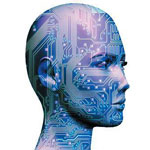 Oscar Pistorius - also known as 'Blade Runner' - is a double leg amputee who is using specially developed artificial legs to compete in races. A world record holder in the 100, 200 and 400 meters Paralympic events, Pistorius was denied by the International Association of Athletics Federations (IAAF) his application to participate in the 2008 Summer Olympics. The IAAF argued that his prosthetic racing legs give him a clear competitive advantage. On May 16, the IAAF's decision was overturned by the Court of Arbitration for Sport, allowing Pistorius to participate in the Olympics if he could make the minimum qualifying time. This episode drives home the monumental issues our society will be facing in the not too distant future thanks to our increasing technological ability to enhance the human body. Terms like 'health', 'disease', 'therapy' and 'medicine' will have to be radically redefined.
Oscar Pistorius - also known as 'Blade Runner' - is a double leg amputee who is using specially developed artificial legs to compete in races. A world record holder in the 100, 200 and 400 meters Paralympic events, Pistorius was denied by the International Association of Athletics Federations (IAAF) his application to participate in the 2008 Summer Olympics. The IAAF argued that his prosthetic racing legs give him a clear competitive advantage. On May 16, the IAAF's decision was overturned by the Court of Arbitration for Sport, allowing Pistorius to participate in the Olympics if he could make the minimum qualifying time. This episode drives home the monumental issues our society will be facing in the not too distant future thanks to our increasing technological ability to enhance the human body. Terms like 'health', 'disease', 'therapy' and 'medicine' will have to be radically redefined.
May 28th, 2008
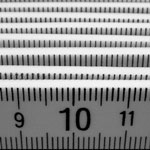 Numerous standard setting organizations around the world are active in defining voluntary nanotechnology and nanomaterial standards, although no one standard has achieved dominance yet. These standards address terminology, property testing, and issues of health and safety.
Numerous standard setting organizations around the world are active in defining voluntary nanotechnology and nanomaterial standards, although no one standard has achieved dominance yet. These standards address terminology, property testing, and issues of health and safety.
May 16th, 2008
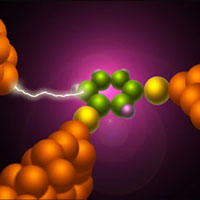 Ask 10 people what nanotechnology is and you will get 10 different answers. And then there are all these terms floating around: 'bottom-up' and 'top-down' fabrication, 'atomically precise manufacturing', 'molecular assembly', 'self-assembly', 'nanorobots', 'nanofactories' and so forth. Try describing nanotechnology as a top-down fabrication process and the folks over at Foresight and CRN will tell you what a short-sighted wuss you are. Try describing nanotechnology the Drexlerian way as a bottom-up molecular assembly technology and some scientists will tell you that you are smoking too much of the good stuff. And then of course you hear about all these 'nanotechnology' products already hitting the market - but they seem decidedly low-tech, such as golf balls, 'no-smell' socks, toothpaste, scratch-resistant car paint, and so on - that's what we have been investing billions and billions of dollars for? Pretty confusing, huh? Let's start to disentangle...
Ask 10 people what nanotechnology is and you will get 10 different answers. And then there are all these terms floating around: 'bottom-up' and 'top-down' fabrication, 'atomically precise manufacturing', 'molecular assembly', 'self-assembly', 'nanorobots', 'nanofactories' and so forth. Try describing nanotechnology as a top-down fabrication process and the folks over at Foresight and CRN will tell you what a short-sighted wuss you are. Try describing nanotechnology the Drexlerian way as a bottom-up molecular assembly technology and some scientists will tell you that you are smoking too much of the good stuff. And then of course you hear about all these 'nanotechnology' products already hitting the market - but they seem decidedly low-tech, such as golf balls, 'no-smell' socks, toothpaste, scratch-resistant car paint, and so on - that's what we have been investing billions and billions of dollars for? Pretty confusing, huh? Let's start to disentangle...
May 6th, 2008
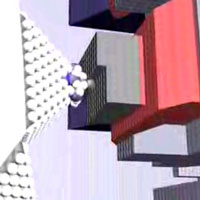 The newly created U.S. Nanotechnology Protection Agency (NPA) announced today, April 1, 2008, that, effective immediately, all laboratories and production facilities for molecular assemblers (commonly called nanobots) need a special license and have to follow strict guidelines in all research and production facilities that deal with nanoassemblers. At the same time, the NPA declared gray goo a hazardous substance. While the NPA regulations will have an immediate economic impact on many nanotechnology companies, most have been preparing for this dreaded day. However, public and media reactions seem to indicate that the public and many organizations were taken completely by surprise.
The newly created U.S. Nanotechnology Protection Agency (NPA) announced today, April 1, 2008, that, effective immediately, all laboratories and production facilities for molecular assemblers (commonly called nanobots) need a special license and have to follow strict guidelines in all research and production facilities that deal with nanoassemblers. At the same time, the NPA declared gray goo a hazardous substance. While the NPA regulations will have an immediate economic impact on many nanotechnology companies, most have been preparing for this dreaded day. However, public and media reactions seem to indicate that the public and many organizations were taken completely by surprise.
Apr 1st, 2008
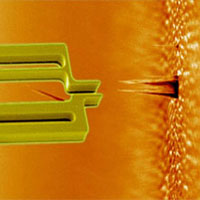 An Interagency Working Group on Manufacturing Research and Development established by the National Science and Technology Council has identified three technology areas as key research and development priorities for future manufacturing: Manufacturing for Hydrogen Technologies; Nanomanufacturing; and Intelligent and Integrated Manufacturing. The Working Group summarized their findings in a new report titled 'Manufacturing the Future.' Although this report is specific to the U.S., most of its general conclusions and recommendations apply to most other industrialized nations and their industrial nanotechnology efforts as well. Nanotechnology is viewed throughout the world as a critical driver of future economic growth and as a means to addressing some of humanity's most vexing challenges. Because of its broad range of prospective uses, nanotechnology has the potential to impact virtually every industry, from aerospace and energy to healthcare and agriculture. Nanomanufacturing integrates science and engineering knowledge and develops new processes and systems to assure quality nanomaterials, to control the assembly of molecular-scale elements, and to predictably incorporate nanoscale elements into nano-, micro-, and macroscale products utilizing new design methods and tools. Efforts in this area are directed toward enabling the mass production of reliable and affordable nanoscale materials, structures, devices, and systems. Nanomanufacturing includes the integration of ultra-miniaturized top-down processes and evolving bottom-up or self-assembly processes.
An Interagency Working Group on Manufacturing Research and Development established by the National Science and Technology Council has identified three technology areas as key research and development priorities for future manufacturing: Manufacturing for Hydrogen Technologies; Nanomanufacturing; and Intelligent and Integrated Manufacturing. The Working Group summarized their findings in a new report titled 'Manufacturing the Future.' Although this report is specific to the U.S., most of its general conclusions and recommendations apply to most other industrialized nations and their industrial nanotechnology efforts as well. Nanotechnology is viewed throughout the world as a critical driver of future economic growth and as a means to addressing some of humanity's most vexing challenges. Because of its broad range of prospective uses, nanotechnology has the potential to impact virtually every industry, from aerospace and energy to healthcare and agriculture. Nanomanufacturing integrates science and engineering knowledge and develops new processes and systems to assure quality nanomaterials, to control the assembly of molecular-scale elements, and to predictably incorporate nanoscale elements into nano-, micro-, and macroscale products utilizing new design methods and tools. Efforts in this area are directed toward enabling the mass production of reliable and affordable nanoscale materials, structures, devices, and systems. Nanomanufacturing includes the integration of ultra-miniaturized top-down processes and evolving bottom-up or self-assembly processes.
Mar 28th, 2008
 The Office of Technology Assessment at the German Parliament (TAB) has released a massive 266-pages report on Converging Technologies (CT). The report's author, Christopher Coenen, analyses CT-related political initiatives and activities in the USA, European Union and Germany as well as some other countries. Utopian and dystopian long term visions for Converging Technologies and Human Enhancement offer clear potential for social conflict. Most of the discussions have so far been limited to academic circles, but some have reached political relevance. These focus on the relationship between nature and technology and between the grown and the artificial. Differences in views on what it means to be human are central to these disputes. The criticism against promoters of convergence visions is that the feasibility is doubtful and that the views are inspired by political and ideological motives. The report outlines options for actions and the possible requirements for research and he ends his report by suggesting options for research funding.
The Office of Technology Assessment at the German Parliament (TAB) has released a massive 266-pages report on Converging Technologies (CT). The report's author, Christopher Coenen, analyses CT-related political initiatives and activities in the USA, European Union and Germany as well as some other countries. Utopian and dystopian long term visions for Converging Technologies and Human Enhancement offer clear potential for social conflict. Most of the discussions have so far been limited to academic circles, but some have reached political relevance. These focus on the relationship between nature and technology and between the grown and the artificial. Differences in views on what it means to be human are central to these disputes. The criticism against promoters of convergence visions is that the feasibility is doubtful and that the views are inspired by political and ideological motives. The report outlines options for actions and the possible requirements for research and he ends his report by suggesting options for research funding.
 Subscribe to our Nanotechnology Spotlight feed
Subscribe to our Nanotechnology Spotlight feed





